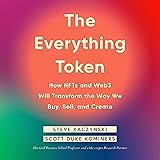The cryptocurrency market, often characterized by its inherent volatility, is currently experiencing a period frequently described as “the calm before the storm” by seasoned analysts. Indeed, the prevailing sentiment among informed market participants suggests a potential for significant upside, particularly as the final quarter of the year approaches. It is astonishing to consider that as much as 87% of the general population remains unaware of crucial macroeconomic shifts, such as impending rate cuts, which are poised to act as potent catalysts for digital assets. This significant informational asymmetry suggests a profound opportunity for those who are paying close attention to the confluence of institutional interest, technological advancements, and shifting monetary policies that are converging to shape the next phase of the Q4 Bitcoin and crypto explosion.
The Macroeconomic Tailwinds Fueling a Crypto Surge
First, an understanding of the broader economic landscape is crucial for appreciating the potential for a substantial rally in digital assets. When central banks implement rate cuts, an increase in monetary liquidity typically follows, making “risk-on” assets more attractive to investors seeking higher returns than traditional fixed-income investments. This dynamic is especially pertinent for assets like Bitcoin and Ethereum, which have historically demonstrated a pronounced sensitivity to such liquidity flows.
Imagine if a vast ocean, which had been slowly receding, suddenly began to rise again with renewed vigor; this is akin to the liquidity injection expected to benefit the crypto markets. Financial analysts, such as Tom Lee, are projecting a “monster move” for Bitcoin and Ethereum within the next three months, signaling a potential for monumental gains that could redefine portfolio performance for this year. This expectation is rooted in a deep analysis of how capital tends to flow when monetary policy becomes more accommodative, pushing investors towards higher-growth, higher-risk opportunities.
Ethereum: A Growth Protocol Poised for Exponential Expansion
Secondly, Ethereum’s unique position as a “growth protocol” is being increasingly recognized as a key driver of its long-term value proposition. Unlike Bitcoin, which is often viewed as digital gold, Ethereum’s ecosystem is continually evolving, attracting innovative applications and traditional finance alike. The integration of Artificial Intelligence (AI) moving onto the blockchain, coupled with the accelerating trend of Wall Street adopting blockchain technology for various functions, underscores Ethereum’s fundamental utility.
This evolving landscape has led to comparisons with the significant financial shifts observed during the 1971 Wall Street era, when the dollar’s detachment from the gold standard spurred immense innovation and capital reallocation. Ethereum, with its robust smart contract capabilities and burgeoning decentralized finance (DeFi) sector, is seen as facilitating a similar paradigm shift, driving innovation at an unprecedented pace. It is noteworthy that entities such as BitMine are aggressively acquiring Ethereum, a clear indication of confidence in its foundational role within the future of digital infrastructure and financial services.
Altcoin Dynamics: Key Players and Strategic Moves
Thirdly, while Bitcoin and Ethereum often capture the headlines, several altcoins are making strategic moves that position them for significant growth during an overall market uptrend. These specific developments, often overlooked by the broader market, are crucial indicators of sector-specific strength.
- Polkadot’s Supply Lock: The Polkadot community’s official vote to lock DOT supply, establishing a 2.1 billion hard cap, introduces a scarcity model that could profoundly impact its valuation. This reduction in available tokens, combined with ongoing utility, is designed to create upward price pressure as demand increases.
- Solana’s Stablecoin Inflows: Solana is witnessing an explosion in stablecoin inflows, which often precedes significant price appreciation. This indicates increased liquidity and user activity within its ecosystem, suggesting a robust and growing demand for its high-throughput, low-cost blockchain. It is anticipated that both Ethereum and Solana will experience substantial growth in this crypto boom, each serving distinct but equally valuable niches.
- Dogecoin’s Institutional Interest: The acquisition of an additional 100 million Dogecoin by Clean Core Dogecoin Treasury Company, bringing its total treasury to over 600 million DOGE, highlights a nascent institutional-like interest in even meme-based assets. This move may signal a growing perception of Dogecoin as a legitimate treasury asset, potentially attracting further corporate and institutional engagement.
The Inevitable March of Institutional Adoption
Fourth, the most compelling long-term catalyst for the crypto market is the accelerating pace of institutional adoption, driven by regulatory clarity and a growing recognition of digital assets’ inherent value. It is observed that major financial institutions, exemplified by Bank of America, are embracing stablecoins with remarkable speed, largely as a direct consequence of recent legislative advancements, such as the stablecoin bill being passed.
Imagine the profound impact when the market clarity bill, anticipated in the coming months, provides a definitive regulatory framework for Bitcoin and Ethereum. It is widely expected that these foundational digital assets will be adopted by financial firms with the same urgency and scale as stablecoins, leading to a fully tokenized financial landscape. Bitwise, a prominent asset manager, is actively “front-running” this incoming wave, evident in the increasing number of filings for stablecoin and tokenization ETFs, signaling a clear understanding of the market’s future trajectory. Their direct conversations with powerful elites and insiders, such as CIO Matt Hogan’s revelation of sovereign wealth funds actively buying Bitcoin to get ahead of U.S. adoption, underscore the significant behind-the-scenes activity driving this shift.
Sovereign Wealth and Pension Funds: Gatekeepers to Trillions
The movement of sovereign wealth funds into Bitcoin via convenient exchange-traded products (ETPs) is a critical indicator of global financial reorientation. These entities, tasked with managing national assets, are perceived to be seeking a “faster, easier button” for exposure, much like gold investors who own both gold ETFs and physical bars. This duality suggests that institutional investors will likely diversify their crypto exposure across both direct ownership and ETPs, driven by the convenience and low cost afforded by the latter.
Furthermore, the allocation of Bitcoin within pension funds, while facing institutional gatekeepers and lengthy due diligence processes often spanning many months, is already underway. These consultants, who are tasked with evaluating investment opportunities, are gradually recommending allocations to digital assets, leading to a “bubbling up” of institutional interest. It is recognized that, in a market already valued at $3 trillion, maintaining a zero percent allocation to crypto effectively constitutes an active “short” position, a risk many institutions are becoming increasingly uncomfortable taking.
Bitcoin’s Trillion-Dollar Trajectory: Supply, Demand, and Disruption
Fifth, the long-term outlook for Bitcoin, particularly its potential to reach $1 million someday, is increasingly being framed not as speculative optimism but as a logical outcome of fundamental supply and demand dynamics and market disruption. This perspective is grounded in a deep analysis of the markets Bitcoin is poised to disrupt.
Matt Hogan of Bitwise articulates a compelling valuation model: Bitcoin is well on its way to disrupting the approximately $20 trillion gold market and the many trillion-dollar international and cross-border transactions market. Dividing the potential value captured from these sectors by Bitcoin’s finite supply suggests a target amount well in excess of its current valuation. This long-term vision is reinforced by stark short-term supply and demand imbalances, where the annual production of approximately 160,000 Bitcoin is dwarfed by the approximately 500,000 Bitcoin being purchased by ETFs annually. This immense disparity in supply and demand creates an undeniable upward pressure on price, indicating that something significant must “give” in the market, ultimately resulting in higher valuations.
Institutional Imperative: Allocating to Avoid Being “Effectively Short”
Finally, a profound shift in institutional mindset is compelling greater allocation to crypto. With the total crypto market now valued at an impressive $3 trillion, a zero percent allocation effectively represents an active bet against its continued growth and relevance. This realization is leading institutions to reconsider their portfolio strategies.
It is increasingly understood that allocating even a modest “one or two percent” to Bitcoin is not necessarily an aggressive bullish play, but rather a strategic move to achieve a neutral position within the broader financial ecosystem. This defensive allocation helps institutions avoid being “effectively short” on a significant and rapidly expanding asset class, mitigating career risk for portfolio managers and consultants. This proactive approach to incorporating digital assets into traditional portfolios is anticipated to gather significant momentum, driving substantial institutional inflows over the next few years and solidifying the potential for a powerful Q4 Bitcoin and crypto explosion and beyond.







